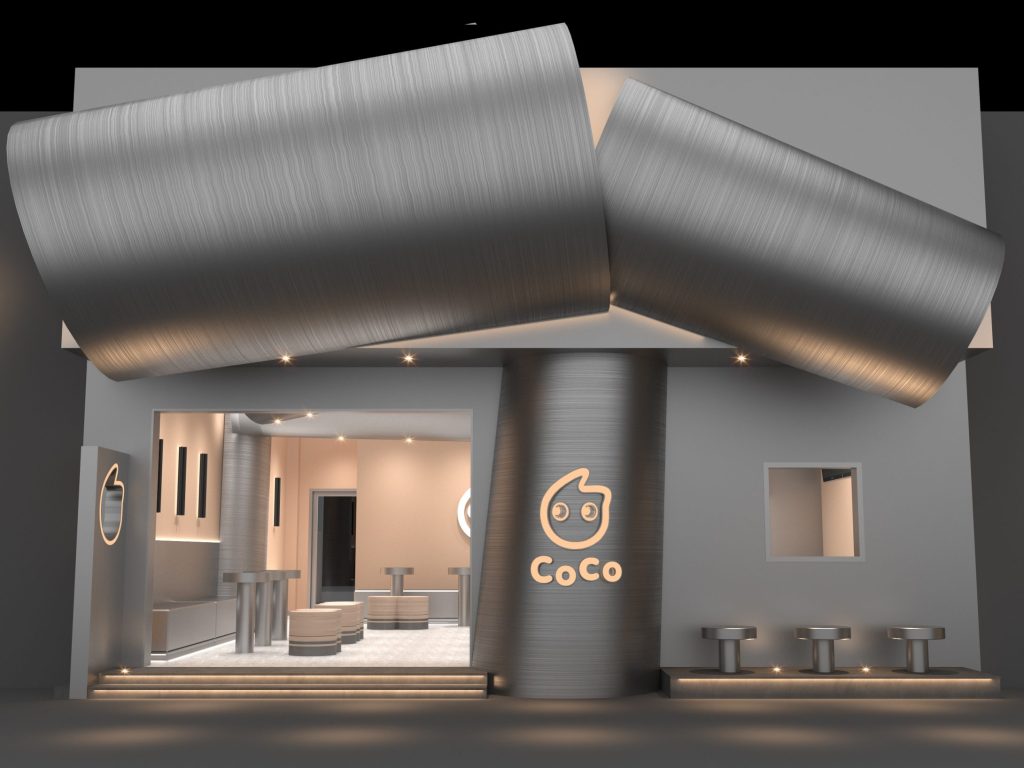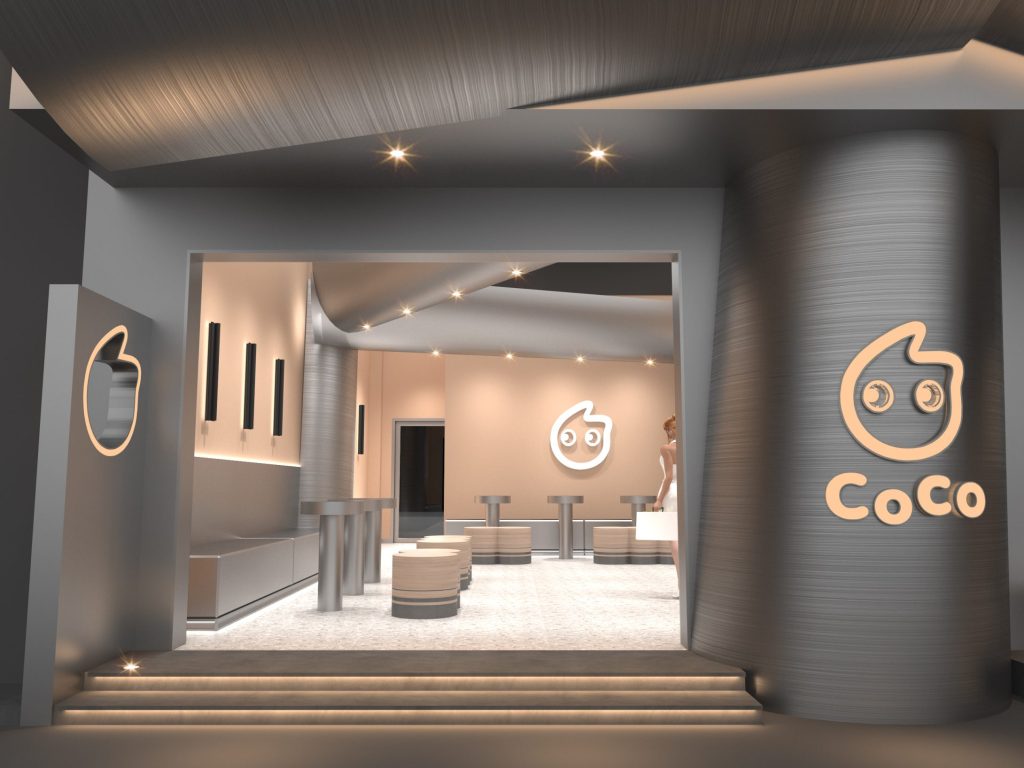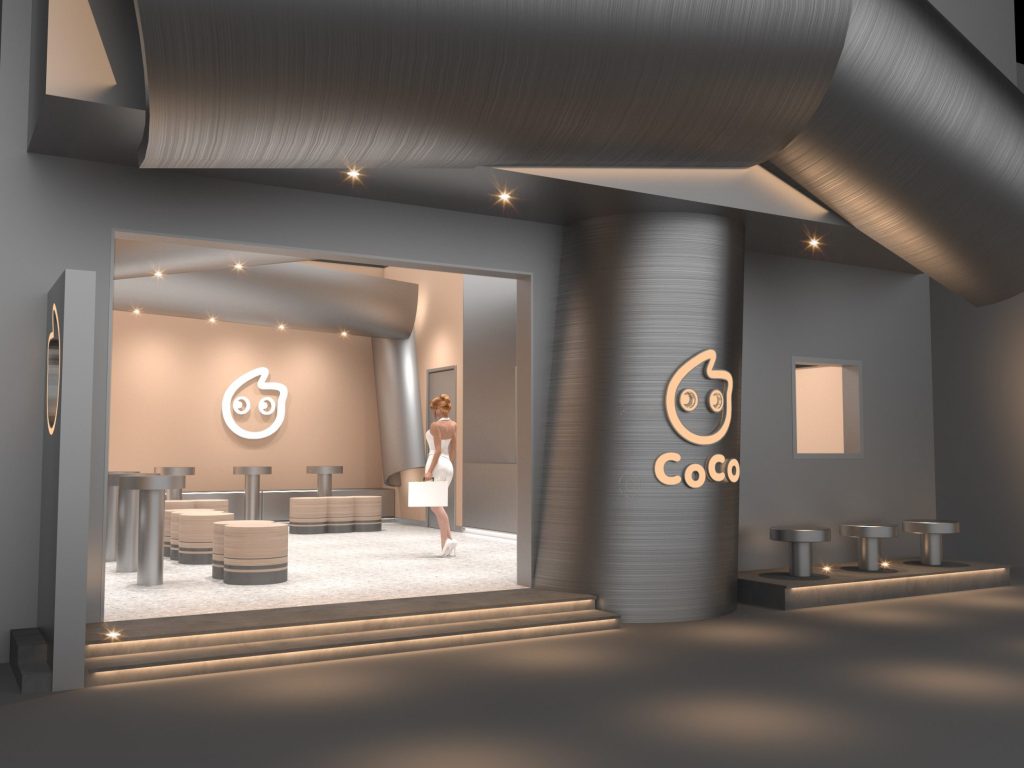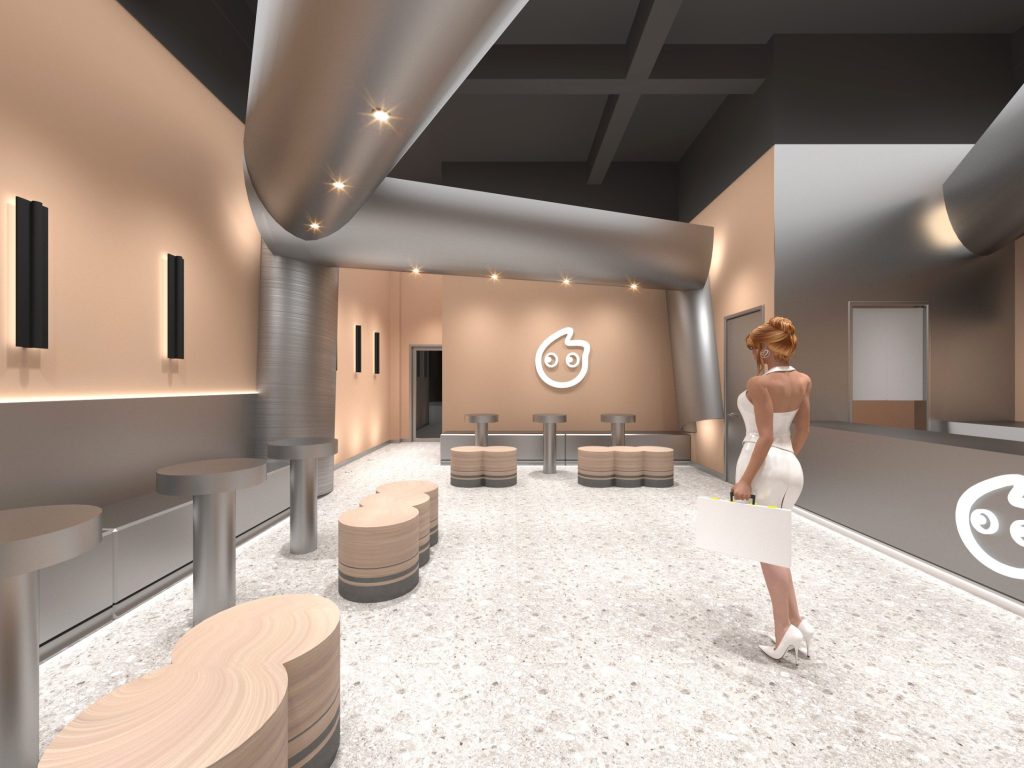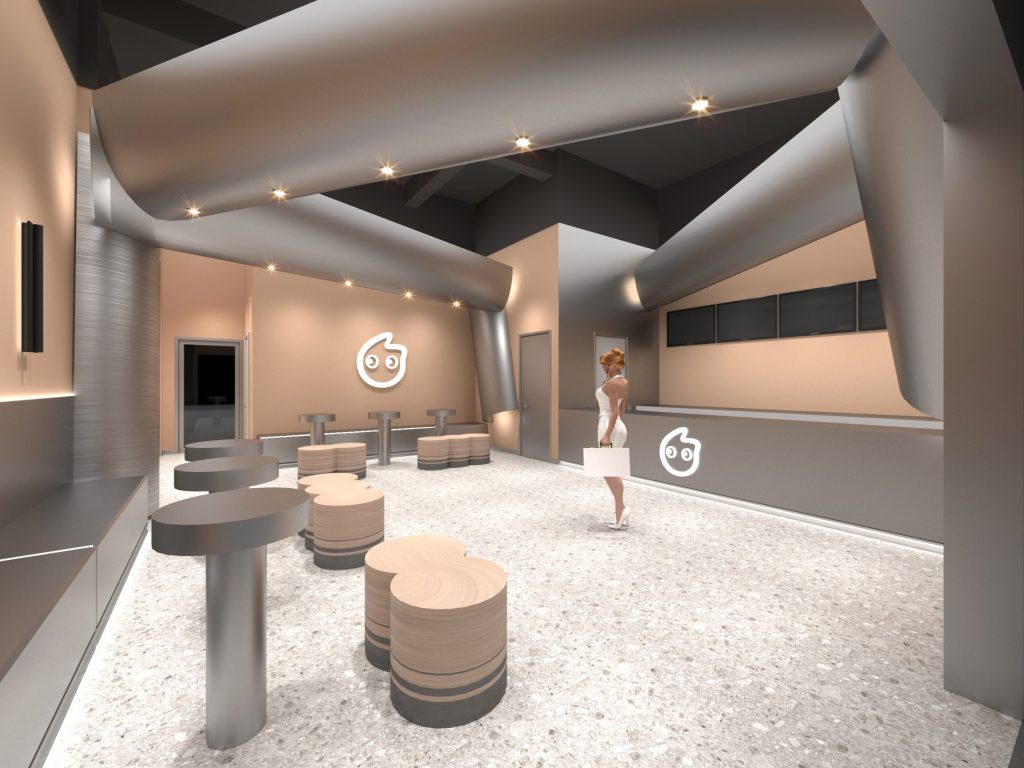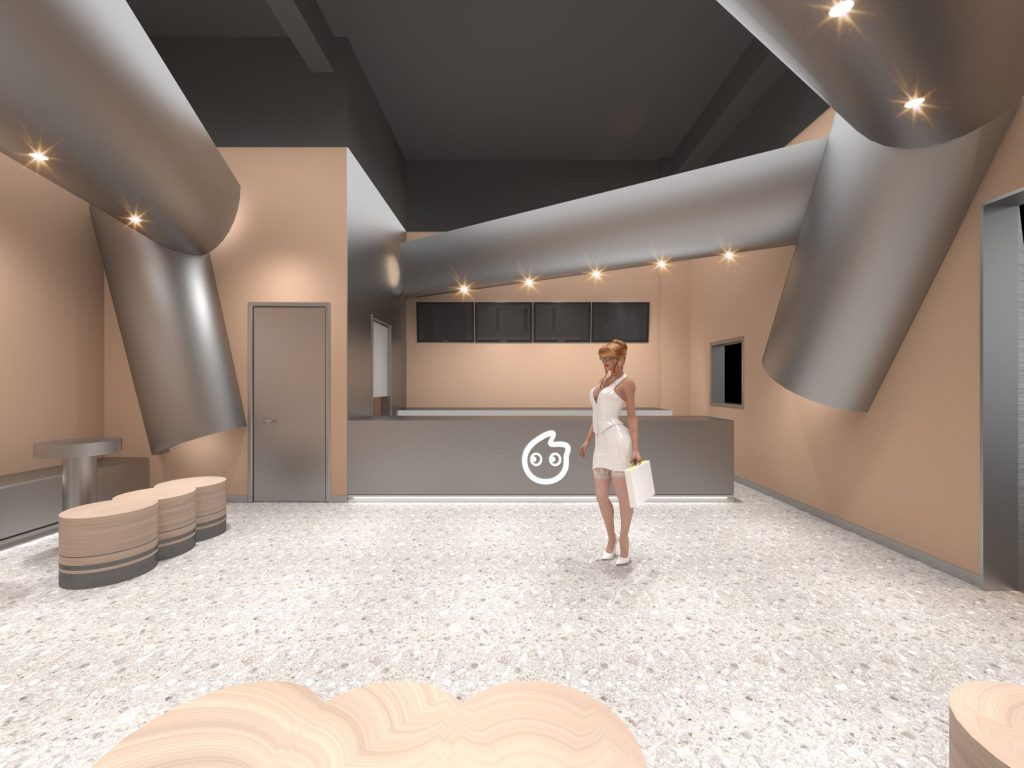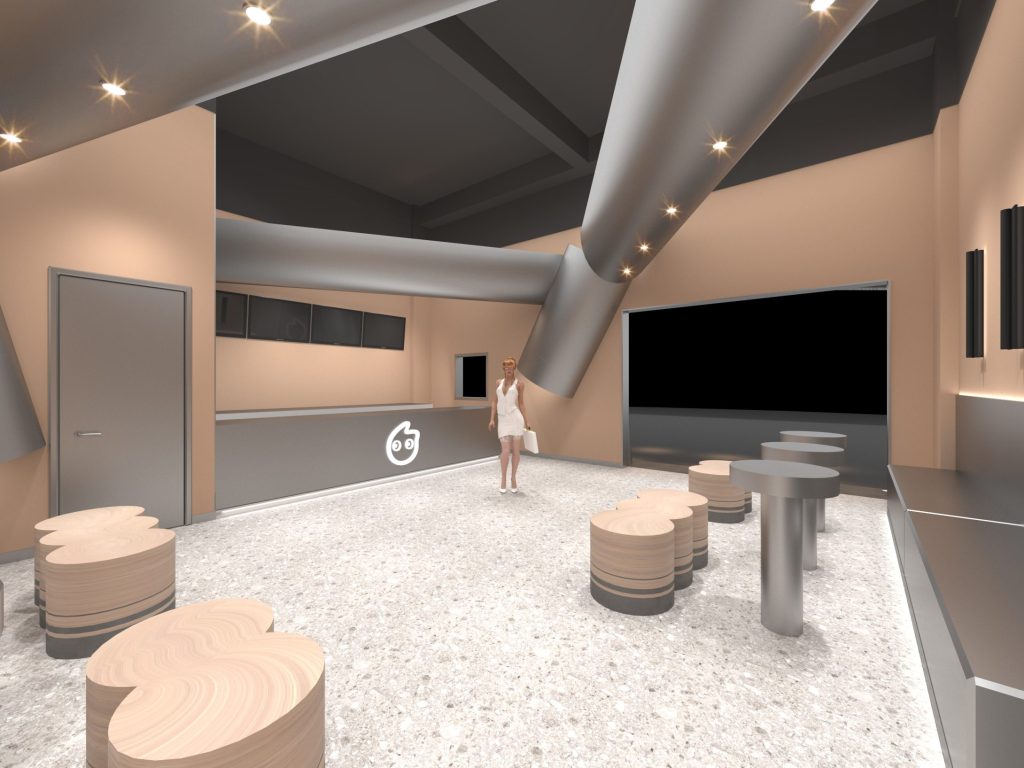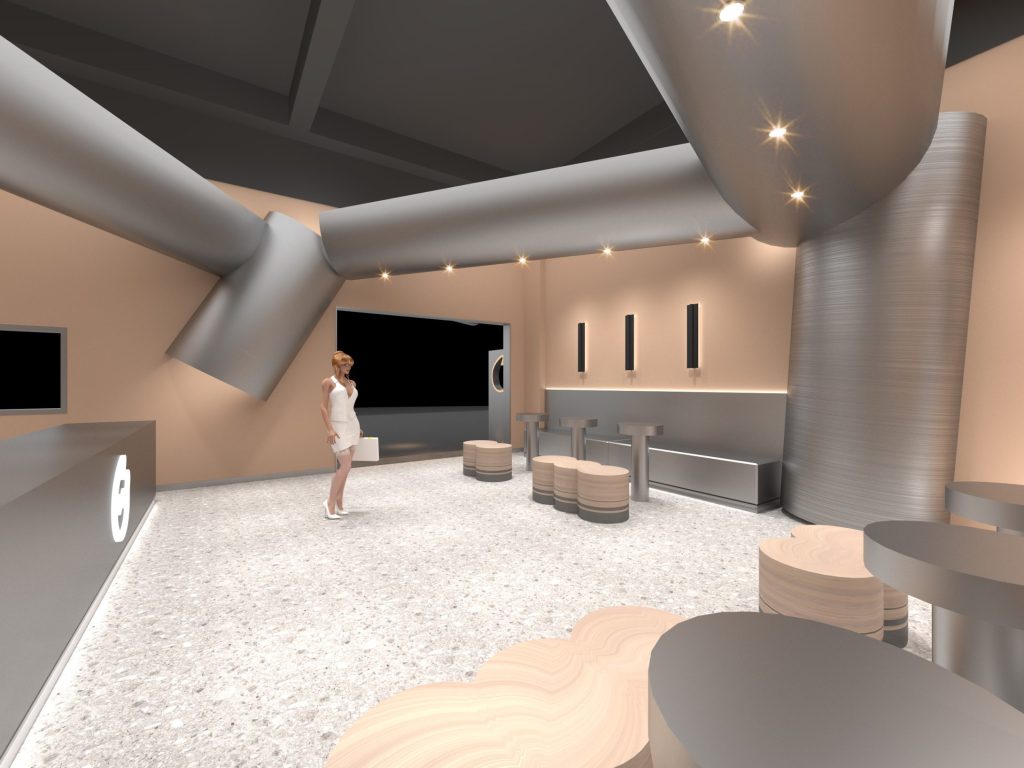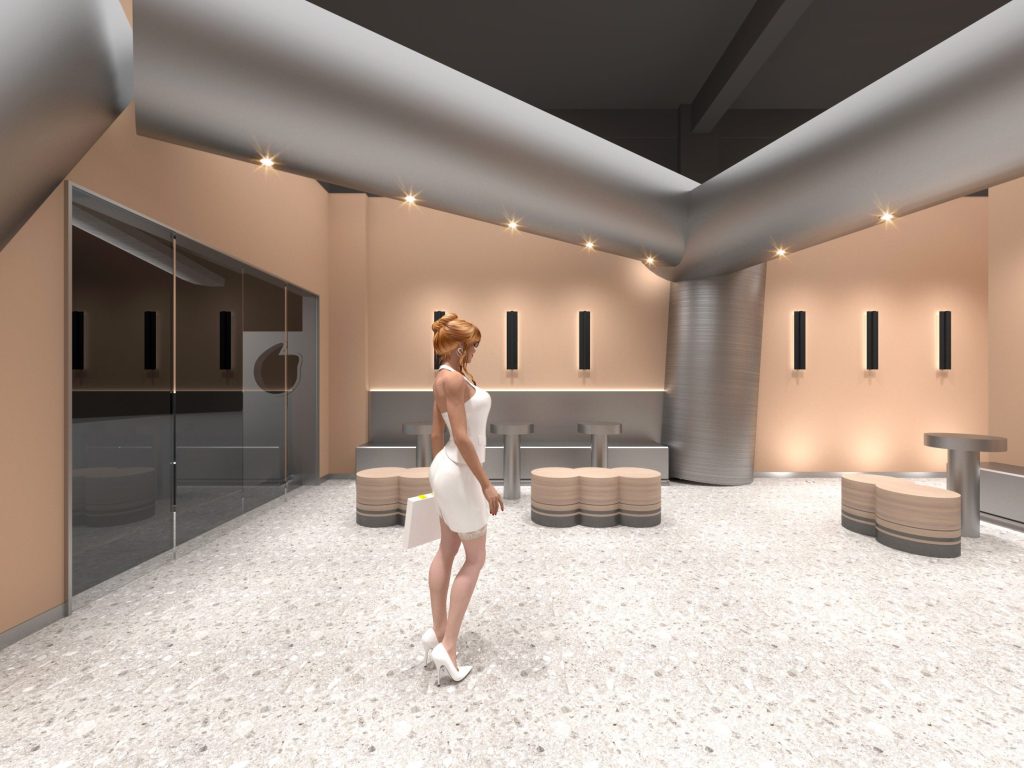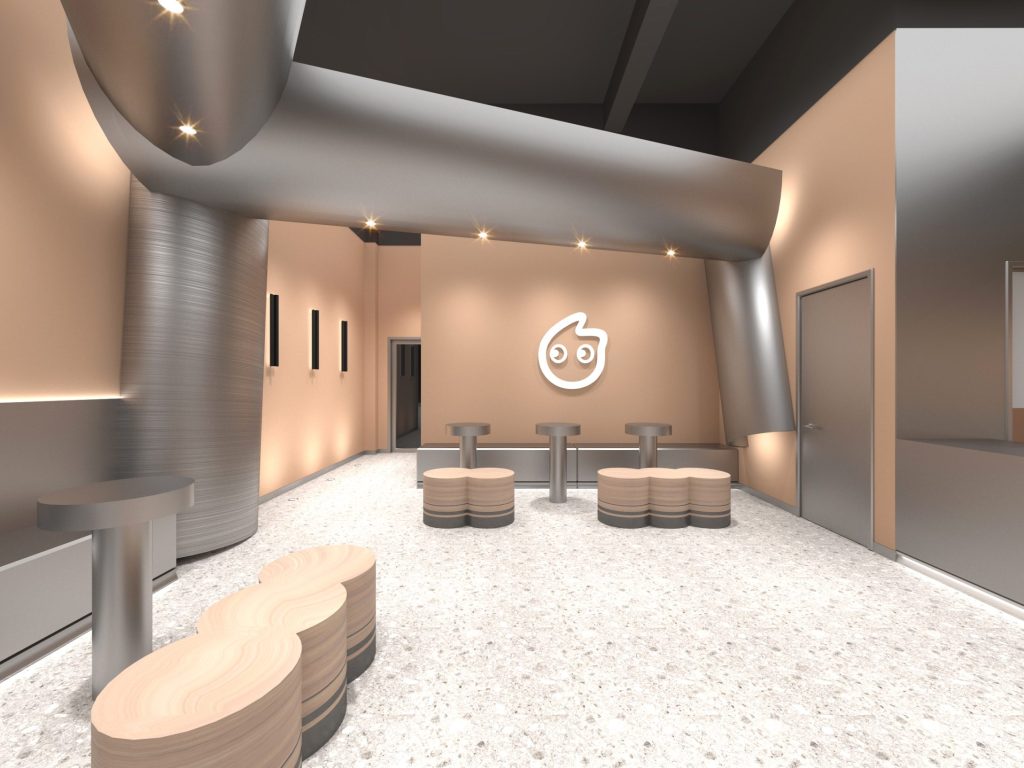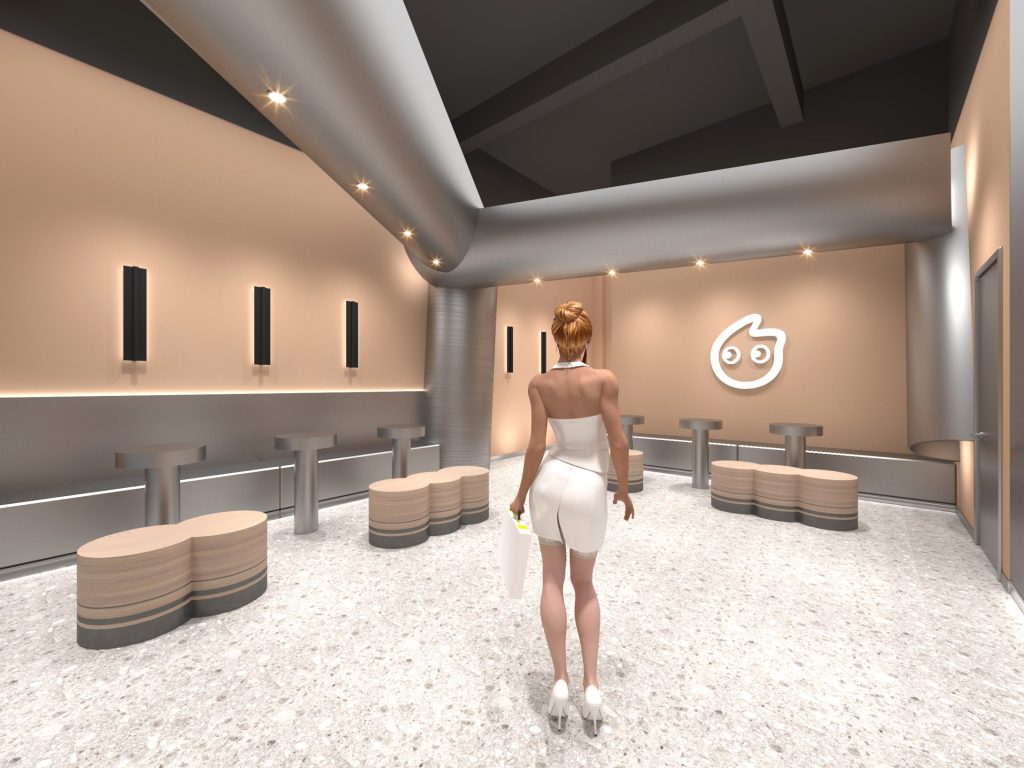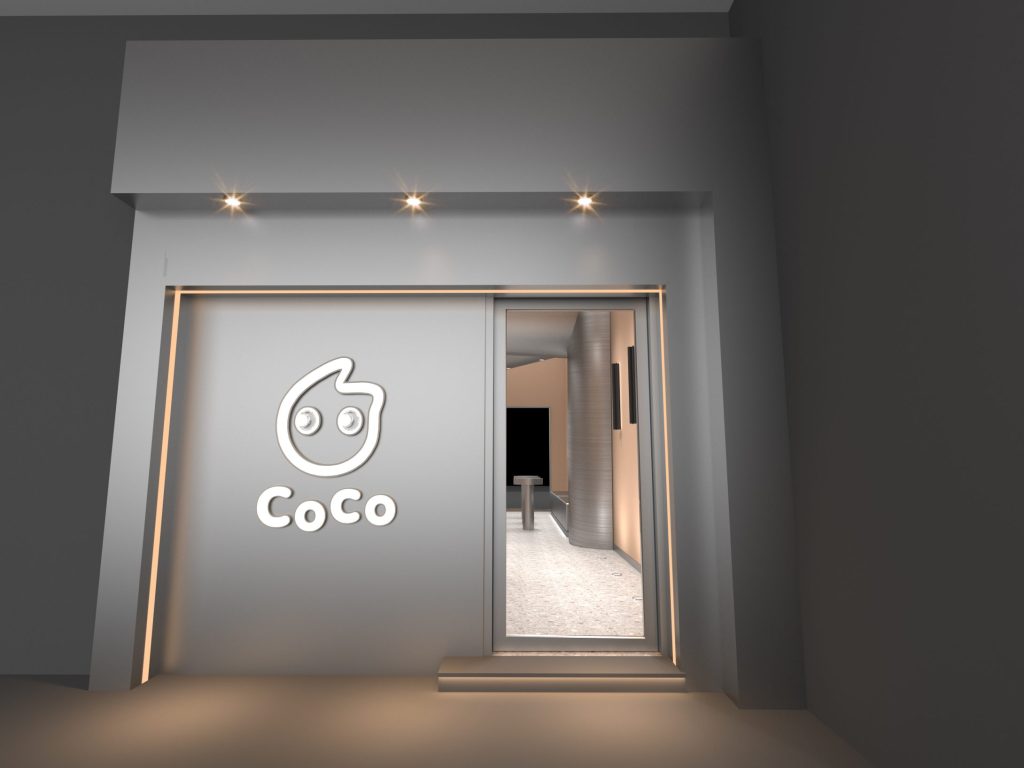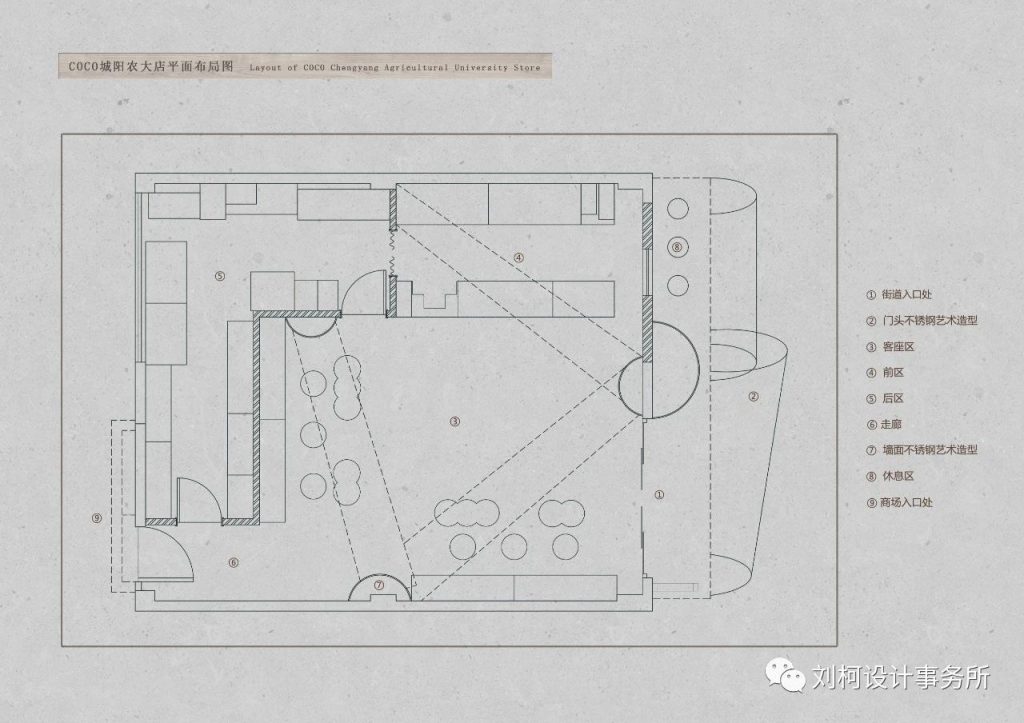COCO Douke Tea has been established since 1997 and has nearly 4000 stores worldwide. It is the only tea shop with an international brand that spans across the three regions of Taiwan, Europe, America, Southeast Asia, South Africa, and other countries. In just over a decade of development, COCO Douke Tea has transformed from an unknown cup of milk tea to a well-known brand. Its success lies in its continuous innovation and creation of tea drinks with moderate and popular flavors, becoming one of the best drinks in the minds of consumers.
Design philosophy: Deconstructionism critically inherits the orthodox principles and standards of modernism, using modernist vocabulary while reversing and reconstructing the relationships between various existing vocabulary. Using the concept of decomposition, emphasizing fragmentation, superposition, and reorganization, valuing individuals and components themselves, and opposing the creation of fragmented uncertainty due to overall unity.
Design scheme rendering
The storefront design of COCO Agricultural University is an exploration of the current social status of young people and an attempt to express personality and will through spatial form. Meanwhile, we are also waiting for answers to the questions we have raised.
「 External facade area 」
We are trying to use strong styling language to break the calm of the original mall and create a conflict with the original market state. The design emphasizes the concept of “dynamic and static integration”: several curved steel plates are inserted into the interior of the building in a dynamic manner, blurring the boundary between the outdoor and indoor areas.
The original complete metal plate was extruded and cut into several pieces with different shapes, among which three curved metal plates were arranged at the entrance, wrapping around the original building door to attract the attention of people coming and going.
「 Entrance hall area 」
The seating area is arranged around them, and the designer sets the different forms of this art installation that each customer pays attention to from every angle while tasting coffee, in order to maintain this visual interaction.
The top design exists in a deconstructive and detached manner, becoming the core visual point of the entire design. The design of tables and chairs is more minimalist and summarizes the language and materials of the form. Make customers pay more attention to the product itself after sitting down.
The designer abandons unnecessary shapes and material stacking in the design of the seating area, and expresses furniture statically in a more concise way, maintaining a good relationship between vision and taste through movement and stillness, and elaborating on the rhythm of the space through integration and separation. Everyone’s actions have a good interactive relationship with their seat and space.
In the design of tables and chairs, many cumbersome design languages are abandoned, and simple geometric shapes, under precise proportional control, demonstrate a strong sense of power. The conflict between the material of the round chair and stainless steel has reduced its presence in terms of visual feedback.
In today’s fast-paced urban life and work, people are no longer just pursuing the taste experience of a cup of milk tea. They are more looking for a spatial and visual experience, where they can fully relax their body and mind, take photos to check in, and meet up with three or five friends for afternoon tea The design of this project aims to create a CoCo versatile space from multiple perspectives, including visual and spatial aspects, to enhance the dining experience for diners.
「 Plan 」

